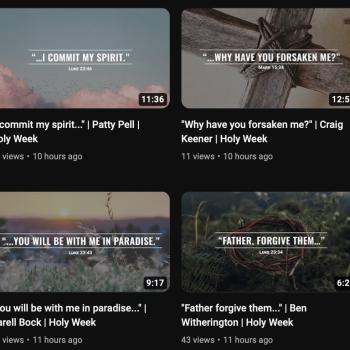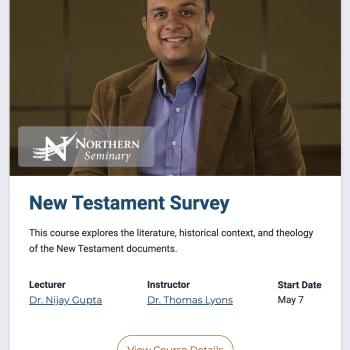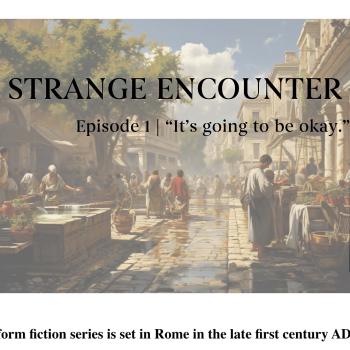Dan Doriani represents the second hermeneutical model in Zondervan’s Moving Beyond the Bible to Theology – “A Redemptive-Historical Model.” This model follows some of the same interpretive procedures endorsed by Kaiser in the first chapter (on “principlizing”). However, in addition, Doriani’s reformed model accepts that the narrative of Scripture progresses and that later in the Bible we have important developments that guide the Christian in ways not apparent in earlier stages of redemption.
Doriani begins by affirming the sufficiency, clarity, and authority of Scripture. By drawing attention to these items, especially the sufficieny of Scripture, he wishes to emphasize that his redemptive-historical method (RHT) ‘seeks to trace movements within the canon’ – not extrapolating the dotted line further beyond it (p. 84). In fact, he makes his views clear regarding those who try to go ‘beyond the Bible’
Those who imply that the canonical writers were so constrained by their age and audience that we lack sufficient direction on vital matters say more, in the end, about their view of God than about their view of Scripture. They deny that the Lord had the capacity to say what he wished before the canon closed. He lacked the power to overcome local conditions. Therefore he could never fully state his will before the apostolic age ended (p. 82).
In the end, I can’t say I found Doriani’s essay methodologically that much more different than Kaiser’s. Both hold that all we need is “in the Bible,” but Doriani does it from a reformed perspective. Also, Doriani defends the more conservative patriarchical view of men and women.
In the responses, Kevin Vanhoozer pinpointed some serious problems with Doriani’s method.
First Vanhoozer sees him as lacking ‘catholic sensibilities’ (p. 128) – not taking into account the church history – which is really a history of biblical interpretation. Sticking only to the canon is to assume that we know enough of how to interpret the Bible without the aid of the wisdom of the successes and failures of the saints (and sinners!) of the past.
Another issue involves the nature of the subjects we want to address. Though the title of the book is Moving Beyond the Bible to Theology, Vanhoozer points out that what Doriani has been focusing on (and Kaiser) are ethical issues (especially women in ministry), but how we get our modern doctrine (such as the deity of Christ) has not been addressed. So, Vanhoozer ends his critique: ‘How did they go beyond the Bible at Nicaea?’ (p. 132).
So far, I have been very pleased with the excellence of the essays and the responses. Webb felt particularly slighted by Doriani and his response is quite edgy and somewhat reactive (and for good reason!). It is almost like overhearing a couple fight – it almost gets a bit uncomfortable, but the discussion is important – how should Christian academics argue? Too often scholars feel the need to be right because their own theology and (in their mind their) faith is at stake. They feel that to err on major issues (like the authority of the Bible or the sufficiency of Scripture) is fatal and sends such a bad message t0 the church. So they push their theological agenda and virtually excommunicate their opponent. But what is at stake is also how we view the frailty of our own knowledge. There is also the virtue of academic humility and recognizing that my tradition or school of thought might actually be misguided or have its own blindspots.
Are we left to two extremes? The overzealous theologian that has to reveal the lies of other theologians and enlighten the world – and the cynical theologian that just wants to voice some thoughts without ruffling any feathers? How do we find a good balance between these, discovering how conviction and respect, passion and humility, can cooperate rather than compete?
Well, so far I found Vanhoozer to be a very good model of one that gives praise to the other views, but has a firm grasp on his own message, viewpoint, and contribution. I look forward to surveying his own “Drama-of-Redemption Model” next.











